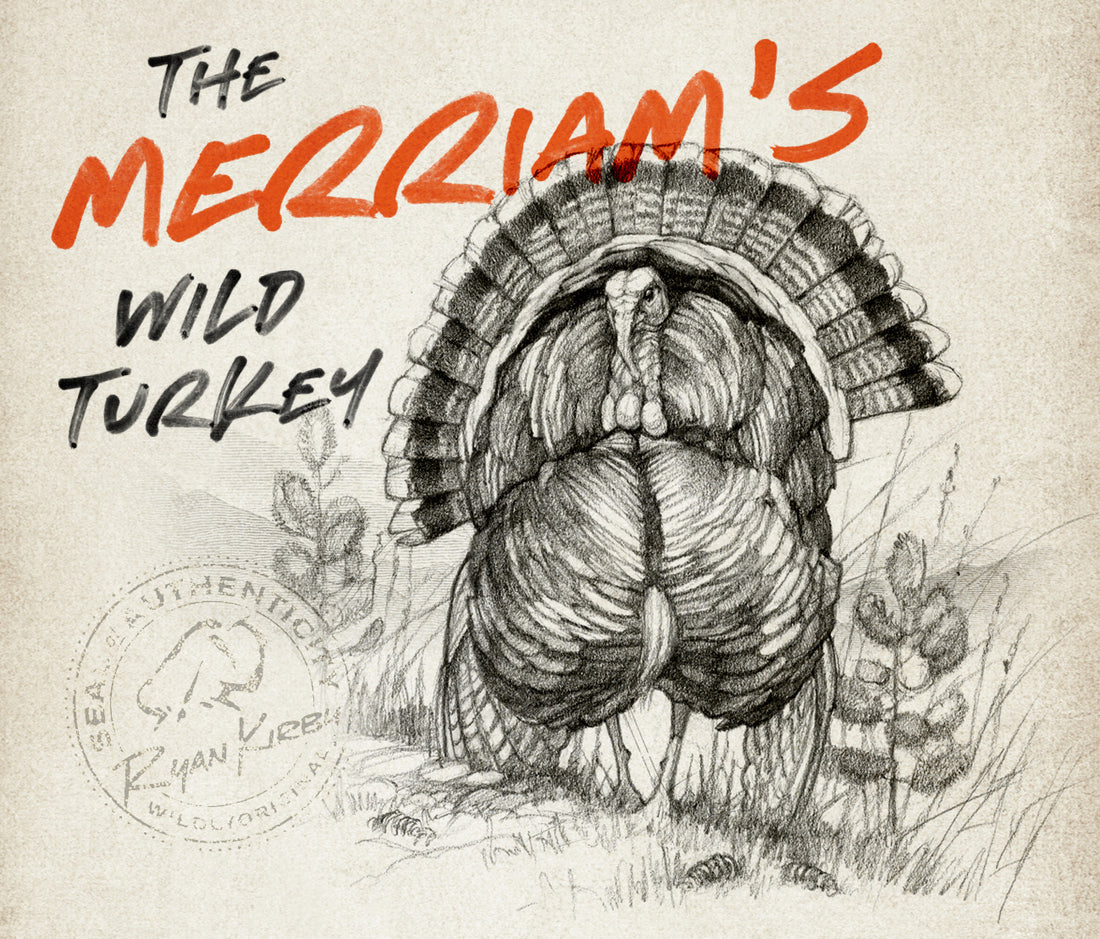Meleagris gallopavo merriami, or Merriam’s for short, is King of the Mountain. Known for his living in large flocks and eagerly responding to a call, the Merriam’s is a bucket list for die-hard turkey hunters. It’s a heart-stopping sight to behold his buff white tailfan rise above the crest of a ridge, approaching your setup amidst the dark backdrop of ponderosa pines on a mountainside. Accustomed to spring snow, howling wind and steeper elevations, the Merriam’s thrives in the American West, from the Rocky Mountains to the Bad Lands of the Dakotas and the farm fields of Nebraska.
Merriam's are the second largest of all four major wild turkey subspecies, just behind the Eastern. Merriam’s can be characterized as somewhat migratory, traveling up to 40 miles between summer and winter ranges. They winter in large flocks, concentrated around food sources. Roost trees are often limited, with sometimes a single tree holding dozens of birds. After flydown, they can travel rapidly and cover great distances.
MERRIAM'S AT A GLANCE
-
Primary Location: The Western United States, primarily the Rocky Mountains
- Estimated Population: 8262,000 (Population estimates based on 2014 survey data from state wildlife agencies)
- Average Male Adult Weight: 18-24 lbs
- Average Female Adult Weight: 8-12 lbs

Wing Feathers
A wild turkey’s wing feathers feature white and black barring at varying widths, depending on the subspecies. A Merriam’s feathers have a light overall appearance, with white predominating the feather barring
Tail fan

Tail feather coloration is the easiest way to differentiate the four subspecies. Used to display for hens during the spring, a gobbler's 18 tail feathers are the same length in adults, but different lengths in juveniles. Merriam’s have snow-white tips on both tailfeathers and covert feathers
Beard

Made of modified feathers, all male turkeys and about 10% of hens sport a beard – long, dark bristles hanging from their breast. Beards can grow 4 to 6 inches annually, but wear at the tip as the turkey feeds. Terrain and habitat differences are the primary reasons for length variance among the subspecies. A Merriam’s beard is often thin, wispy and short due to rugged mountain terrain and weather.
Spurs

The spurs on the back of a turkey’s leg are made of smooth, shiny keratin and range in color from black to pink. Both sexes are born with small button spurs, but they continue to grow in male turkeys. Merriam’s spurs are almost always short and rounded as they are worn down by steep, rocky terrain.
Gobble

The pitch of a gobble from different subspecies can be quite different, ranging from 400-4,500 HZ. The gobble of a Merriam’s wild turkey is higher pitched and much choppier than the Eastern wild turkey. Some say it sounds as if they have a mouthful of bubble gum. It’s ranked the lowest of all wild turkey subspecies, at a 1 out of 5 in strength.
The Grand Slam Subspecies of the Wild Turkey
Have you completed a Grand Slam hunt? The “Grand Slam Subspecies of the North American Wild Turkey” by Ryan Kirby celebrates a true American original - the wild turkey. Essential for any turkey hunting enthusiast, this print is perfect for the office, hunting lodge, or mancave.
Customizable Merriam Wild Turkey Prints
Whether it’s the people, the location, or the bird, every turkey hunter has a hunt they’ll never forget. Now, you can commemorate that special hunt with the ultimate piece of turkey art!
Our customizable Merriam Wild Turkey print shell highlights the unique characteristics of Osceola Turkey and allows you to write in the hunter’s name, harvest date, location, weight, spur size, beard length, and story of the hunt in the “Field Notes” section. You can also apply your photo directly on the print with an adhesive. Makes a great gift for the die-hard turkey hunter, father, or hunting mentor.
Each print is still signed and stamped by Ryan with his Seal of Authenticity.




